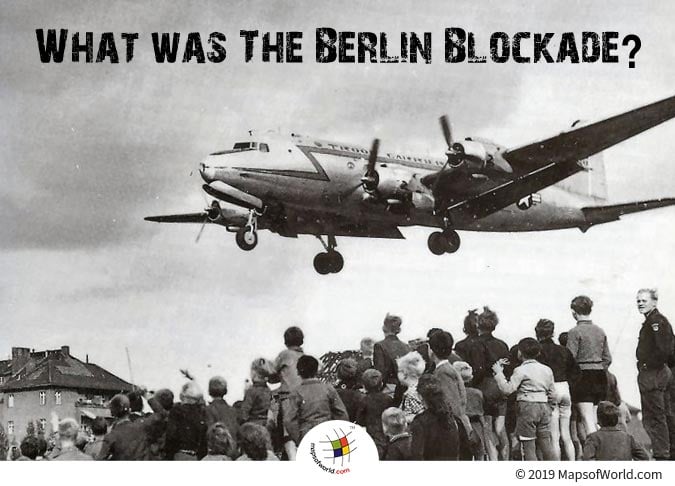What was The Berlin Blockade?

The end of World War II finishes a prolonged and very draining military exercise but another long period of hostilities and tensions commenced in the form of the Cold War. The Berlin Blockade (June 24, 1948 – May 12, 1949) is an international crisis in the early days of the Cold War in which the former Soviet Union blocked off the Western Allied powers’ access to railway, road, and waterways. This move necessitated the air forces of the Western Allies and other friendly countries to fly over 272,000 sorties (in the year that the Berlin Blockade lasted) and carry supplies to the people of West Berlin.
In 1945, as World War II drew to a close, the Soviet Army was the first to enter Berlin. They were soon followed by the American, British, and French troops but only after Berlin had been under control by the Soviets for a couple of months. The city of Berlin was in a state of utter devastation. Most of the city’s infrastructure had been destroyed, sewage networks broken down, and food was in short supply. In fact, Berlin had witnessed a mass exodus between 1944 and 1945 with the population going from 4.6 million to about 2.8 million.
It had been agreed in the Yalta Conference of February 1945 that all of Germany and the capital Berlin would be divided into four occupied zones. eastern Germany was completely under Soviet control when the other Allied occupied zones were being set up in Berlin. This means that the British, American, and French troops could not move in and out of Berlin and procure supplies without crossing Soviet occupied territory.
Soviet dictator Joseph Stalin did not expect the Western Allies to hold on to their jurisdiction in West Berlin. He soon mounted a campaign that was designed to frustrate the Allies into leaving. This started with delaying cargo trains entering Berlin through Soviet occupied Germany. Instead of leaving, however, in June 1948, Britain, France and the US declared that their occupational zones would be united into west Germany. This also coincided with the introduction of a new currency, the Deutsche Mark in West Germany.
As an act of retaliation, the Soviet authorities declared that the Western Allies no longer had a right over any part of Berlin. On June 24, 1948, they implemented a full-scale blockade on all surface transport links between West Germany and Berlin. Unwilling to give up their claim on Berlin and reluctant to engage in another military exercise, the Western Allies decided that the only way ahead was to procure supplies through a massive airlift effort. Over the next 321 days, air force crew of the Western Allies and other friendly countries flew 272,000 sorties into West Berlin and provide the troops and Berliners with much needed supplies. By May 1949, it had become apparent to the Soviets that the Berlin Blockade had failed due to the Berlin Airlift from the Allies, and the Soviets agreed to reopen their borders on May 12. By this time, however, the creation of two separate republics, East and West Germany, had become inevitable.

